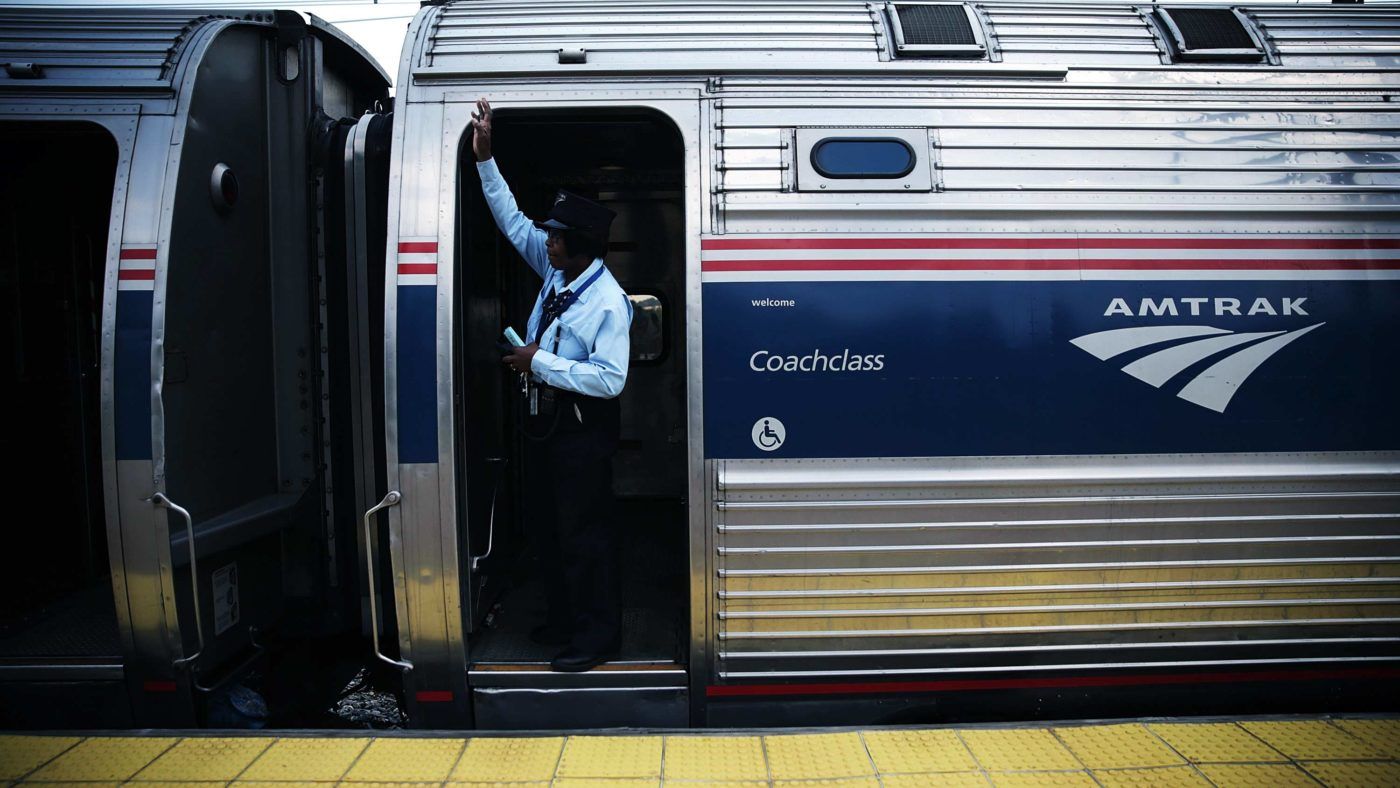Donald Trump knows how to dig himself into a hole. Last week, he proposed to tip money into one too, by updating America’s infrastructure.
The need for investment is obvious every time you enter an American airport, or attempt to drive from one city to another. America’s infrastructure, like its bureaucracy, dates from the middle decades of the 20th century. Dams and drainage by FDR, roads and bridges by Eisenhower. An antique dealer would call it mid-century modern.
Donald Trump is mid-century modern too: the quiff and bad attitude of the West Side Story hood, the belligerent masculinity and glass and steel optimism of the American Fifties. Although Trump’s infrastructure proposals are not entirely a period piece, are they what 21st-century America needs?
Travelling in the US is purgatorial. The interstate highways are crumbling and crowded, and never-ending repairs are driving up the tolls. The average American commute rose from 21.7 minutes in 1980 to 26 minutes in 2016; in other words, it became about 25 per cent more tedious and unproductive than it already was. With the growth of exurbs, nearly one in five Americans now commutes for 45 minutes each way. According to The Washington Post, in 2014 Americans wasted the equivalent of 1.2 billion work days in cars and buses.
Most of the major airports are jammed with passengers, and gummed up with invasive and incompetent security procedures. There are not enough runways. Tickets are expensive. The major airlines, lumbered with government regulation and pension commitments, are slowly agglomerating into a single behemoth which preserves the worst qualities of its elements.
In Europe and Asia, fast trains whisk the traveller from airport terminal to major city in 15 or 20 minutes. Not in America. The drive into Manhattan from JFK or Newark Airports is often longer than the hour-long flight from Boston or Washington, DC.
The only consolation in the ordeal-by-airport is that you are not travelling by train. America’s train terminals are drop-in centres for the mad and addicted. Should you survive the ticket hall, the rolling stock is a laughing stock. Amtrak, the perpetrators of America’s national rail service, offer extended and expensive journeys for tourists. I am yet to meet an American who has been on one. Perhaps no one survives.
Trump has proposed to spend $1 trillion on roads, bridges, and railroads. The government will spend $200 billion over the first decade, and this investment is intended to draw in another $800 billion from private investors. This is a colossal amount of money. The government contribution alone would double the $103 billion that the Obama administration earmarked for infrastructure in its stimulus bills. And the private investment would be equivalent to Obama’s total stimulus spending of $787 billion.
All of that was financed from the federal deficit, without any significant private component. Public-Private Partnerships (PPPs) are still new in the New World. Britain had its first PPP in 1992. In the two decades after 1990, the EU signed more than 1,400 PPP deals to build pan-European infrastructure. Significantly, America’s only major PPP, the West Coast Infrastructure Exchange, overlaps the needs of California, Oregon and Washington State with those of the Canadian province of British Columbia. To Trump’s credit – and the Treasury’s – he proposes to update the efficiency of America’s infrastructure construction.
Trump also wants to privatise the Federal Aviation Administration (FAA), which employs 30,000, with private operators managing traffic flows and the FAA managing air safety. Again, something should be done: the FAA is a creaky bureaucracy, and it needs to upgrade its air traffic control systems. But the maintenance of roads and bridges, or runways and air lanes, by private companies could lead to even higher tolls and user fees.
If investors are drawn to high-density, high-return infrastructure, how will the government find partners for the unprofitable roads and bridges of rural, red-state America? While upgrading and deregulating air transportation might may small airports more profitable and direct flights between second-tier cities more common, private investment will be drawn to major nodes and established players.
And how will the government find partners and profits in an upgraded rail network? America’s low population density means that European-style high-speed trains are uneconomical in all but a few regions. The most feasible and vital is the Northeastern Corridor, which links the researchers of Boston with the investors of New York and the bureaucrats in Washington.
Today, the Acela Express, the paste jewel in Amtrak’s paper crown, is too slow to permit a breakfast briefing in Washington, DC, a working lunch in New York, and then a late afternoon pitch in Boston. Upgrading the Acela and its track would accelerate the circulation of ideas and money between these three cities. That would benefit the American economy, but European experience suggests that it might not benefit the investors.
These are high-spending, high-risk proposals—and that’s before Congress rolls out the pork barrel. Absent from Trump’s list is a cheaper way of improving the most modern infrastructure of all. A geographically and politically divided people would benefit from a relatively cheap programme to speed communications, cut the environmental and productivity costs of commuting, and even generate profits for private investors from innovative infrastructure in the style of FDR and Eisenhower: free wifi, coast to coast, in partnership with the telecom companies.


